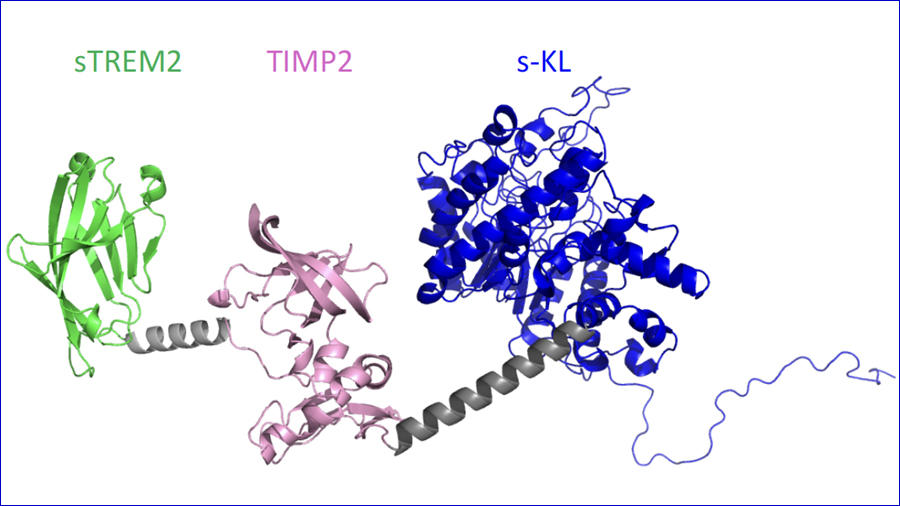A research team at the Institut de Neurociències of the Universitat Autònoma de Barcelona (INc-UAB) has developed a new protein capable of improving memory and reducing Tau protein levels in animal models of Alzheimer's disease. The new compound, HEBE, generated by fusing three proteins, represents a new approach in the search for new strategies to tackle the disease.

The collaboration of several INc-UAB laboratories has resulted in a multidisciplinary approach to address the challenge of finding an effective treatment for Alzheimer's disease, a neurodegenerative disease affecting millions of people worldwide.
Until now, therapies focused on a single protein have had limited success, due to the complexity of the biological processes involved in ageing and neurodegeneration. Now, the research groups Gene therapy for diseases affecting the CNS, Gene therapy strategies for neuromethabolic diseases, Systems pharmacology and bioinformatics and Neurobiology of Alzheimer's disease have combined their areas of expertise to work together in the investigation of therapeutic alternatives.
The result has been the development of HEBE, a chimeric protein made up of three proteins: s-Klotho (s-KL), sTREM2 and TIMP2, which in previous studies have been found to have positive effects in counteracting the effects of the disease. The research team carried out the binding of the three proteins using computer simulations and, subsequently, confirmed their stability and efficacy in tests in cells and in murine models of Alzheimer's disease.
The results demonstrate that mice treated with the chimeric protein show an improvement in memory and a reduction in the levels of the Tau protein, one of the main indicators of the disease. The study has also observed a reduction, although not significant, in the levels of beta-amyloid, the other protein that is also implicated.
"HEBE represents a step forward in the development of new therapeutic strategies against Alzheimer's disease," explains Jon Esandi, INc-UAB researcher and first author of the study. "The results we present show the potential of HEBE and pave the way for its possible application in the clinic," says Miguel Chillón, coordinator of the research.
The study also exemplifies the success of the collaboration between different research groups of the INc-UAB and demonstrates the potential of synergies between laboratories.
Original article: Jon Esandi, Pedro Renault, Maria Dolores Capilla-López, Rebeca Blanch, Ángel Edo, David Ramirez-Gómez, Assumpció Bosch, Beatriz Almolda, Carlos Alberto Saura, Jesús Giraldo, Miguel Chillón. HEBE: A novel chimeric chronokine for ameliorating memory deficits in Alzheimer's disease. Biomedicine & Pharmacotherapy, Volume 183, 2025. https://doi.org/10.1016/j.biopha.2025.117815






